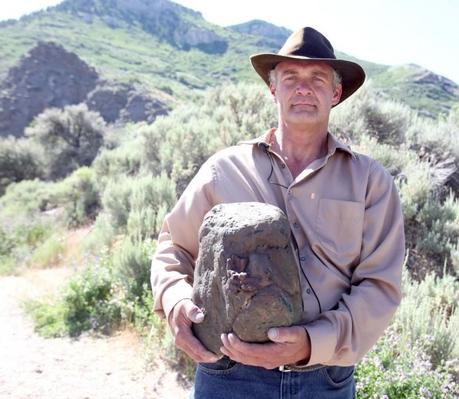According to this story, a canyon explorer in Utah believes he has found the first fossilized evidence of a Bigfoot:

It doesn’t require paleontological expertise to know that facial flesh (i.e., soft tissue) doesn’t fossilize, so this is nothing more than a curiously shaped rock.
So despite not having fossil evidence of a Sasquatch, what we do have is confirmation that humans are perceptually primed to see faces in strange places. This effect, known as pareidolia, is often associated with perceptions that are later constructed as “religious.” Some of the more famous examples include Cheeto Jesus and Cinnamon Bun Mary.
Why might humans be primed to see faces wherever they happen to look? There are evolutionary advantages to being aware of human or animal agents in the surrounding environment. These agents, after all, may be harmful to health and they don’t come with warning labels or caution beepers. If, as is often the case, it turns out the perception was mistaken, then no harm no foul. Better safe than attacked, mauled, eaten, or sorry.
Similar considerations form the theoretical foundation for Stewart Guthrie’s Faces in the Clouds: A New Theory of Religion (1993), a superb book that played a leading role in the formation of modern evolutionary religious studies. Guthrie, Professor Emeritus of Anthropology at Fordham, now spends time in Boulder and I was fortunate to meet him last week for a very long lunch. Our conversation was fascinating and I learned some surprising things about the intellectual context of Faces in the Clouds. When I see him in the future, I’ll ask if I can share. I’ve already invited him to post on the blog whenever he likes. Let’s keep our fingers crossed.

